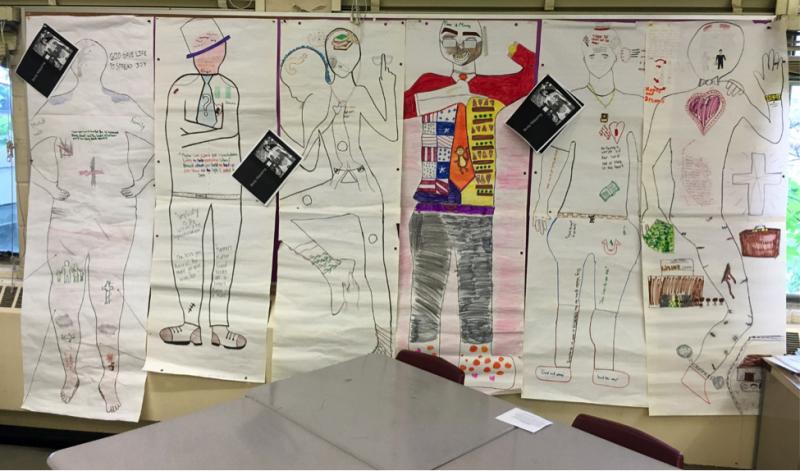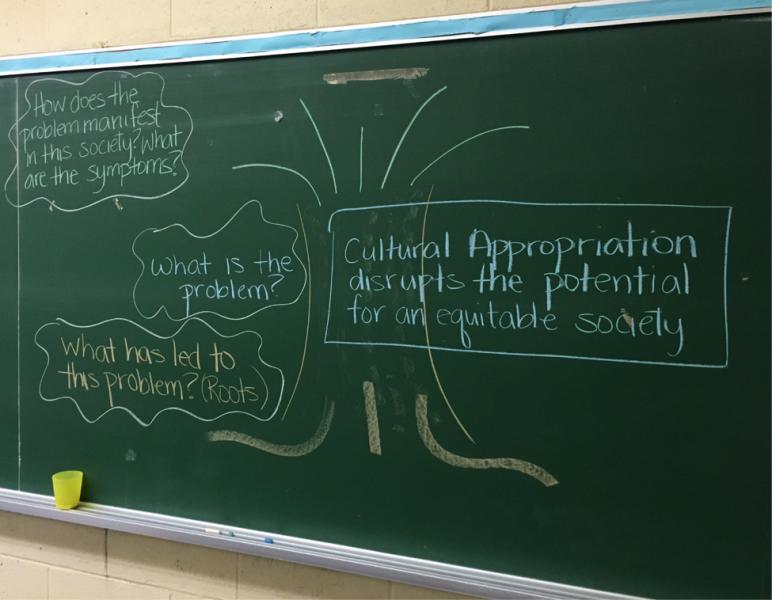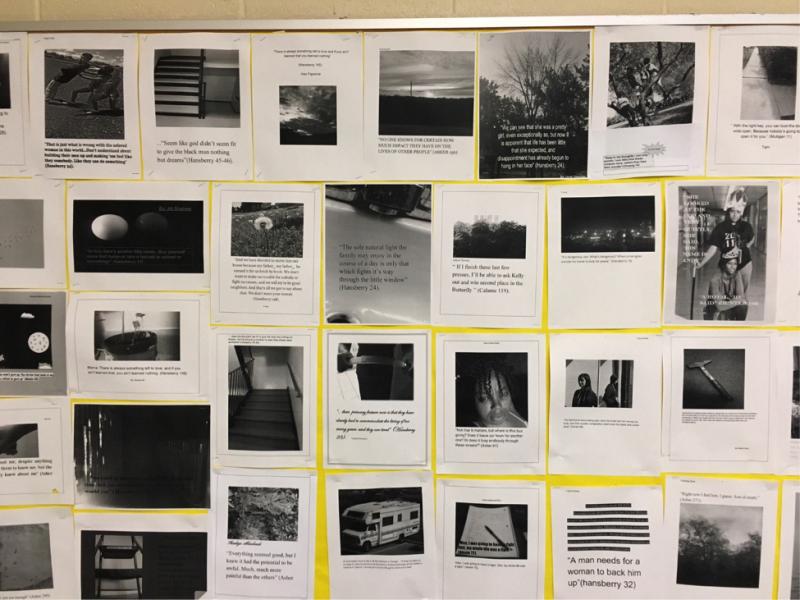Critically Conscious Learning: Using Participatory Action Research Methods to Engage Students
Keywords: critical consciousness raising, collaborative inquiry, culturally responsive and relevant pedagogy, Youth Participatory Action Research
As outlined by many of the social and political movements happening around us today, now more than ever, youth need to be critically conscious of their world in order to navigate it successfully. The Toronto District School Board, where I teach, uses the hybrid model of culturally responsive and relevant pedagogy (CRRP), based on frameworks put forth by Gloria Ladson-Billings (1995) and Geneva Gay (2000), not only to assist with academic achievement, but to also help facilitate critical consciousness.
During the 2015-2016 school year, I held the position of Student Work Study Teacher (SWST). As a provincial initiative, SWSTs are assigned to schools where students are not achieving according to Ontario Ministry of Education standards. Part of my role was to collaborate with teachers to develop inquiries through pedagogical documentation, for instance by capturing student learning through products, observational notes, photos, videos, and interviews. Stemming from this process, I engaged in a professional learning inquiry with one of my collaborating teachers to increase student engagement in a 9th grade academic English class. Since the school board requires its use, I chose to focus on CRRP (Toronto District School Board, 2013), in particular its emphasis on critical consciousness, to work towards this goal.
In my experience, CRRP is often utilized uncritically and tokenistically as a tool to address solely students’ cultural differences, as opposed to a tool that engages with cultural markers to encourage criticality of the systems that continue to impose oppression. I am not alone in noticing this, Ladson-Billings (2014) critiques how her theory of Culturally Relevant Pedagogy (1995) is being taken up, stating that “the idea that adding some books about people of color, having a classroom Kwanzaa celebration, or posting ‘diverse’ images makes one ‘culturally relevant’ seems to be what the pedagogy has been reduced to” (p. 82). While culture is often understood solely based on exterior markers like skin color, in order for educators to foster criticality, our understanding culture should be expanded. Culture should also account for notions like youth culture (Ladson-Billings, 2014), and the intersection of dynamic cultural positionalities such as sexuality, gender identity, socio-economic status, ability, ancestry, and religion, among others. Focusing on the concept of critical consciousness raising (Freire, 2000) allowed me the opportunity to effectively begin a conversation about these concerns with my collaborating teacher.
Critical Consciousness
Godfrey and Grayman (2014) define critical consciousness as “the degree to which individuals are able to ‘read’ social conditions critically and feel empowered to act to change those conditions” (p. 1801). Additionally, they posit that critical consciousness “is becoming increasingly recognized as an important aspect of marginalized youths’ development and a key facet of civic development among all youth” (p. 1801). In realizing this, I became curious to know whether students’ engagement would increase if they were applying what they were learning in class to the world around them.
To begin this process of shifting our pedagogical stance to one that intentionally used critical consciousness, I chose to utilize methods of Youth Participatory Action Research (YPAR). Cammarota and Fine (2008) define YPAR as a methodology that “teaches young people that conditions of injustice are produced, not natural; are designed to privilege and oppress; but are ultimately challengeable and thus changeable” (p. 2). Therefore, I saw YPAR as an extension that could provide students with an opportunity to apply their learned knowledge to the world around them to become active agents of change. To introduce students to YPAR, I chose to incorporate three methods into a unit on the play “A Raisin in the Sun” by Lorraine Hansberry (2004): Body Mapping, Problem Tree, and PhotoVoice.
Body Mapping
Body Mapping is a narrative-based inquiry method that was developed in Tanzania, Zambia, and Canada by a Canadian AIDS service organization to help in counselling and documenting the narratives of HIV-positive women in Africa (CATIE, 2007). Through Body Maps, students created visual interpretations of characters’ experiences with discrimination based on race, gender, age, and socio-economic status. My collaborating teacher and I then conferenced with students to discuss what symbols students chose to use to interpret their assigned characters’ onto Body Maps, and to go over what connections they made between their characters’ lived experiences, and the ways that these issues manifest in society today. The Body Maps acted as an initial tool to help students become critically conscious of the characters’ experiences with discrimination by mapping them out using symbols.

Figure 1: Completed Body Maps
Problem Tree
Next, students created Problem Trees to explore how some of the key themes from the play manifest in the media. Problem Trees examine the core of an issue by identifying the main problem, its root causes, and manifestations of the problem (The Overseas Development Institute, 2009). Through Problem Trees, one can identify the multiple causes and manifestations of a problem in order to arrive at a well-informed response or solution. For example, one group of students analyzed the derogatory term “faggot” in connection to the gender stereotypes experienced in the play, to better understand its homophobic implications and the ways in which its devaluing of effeminate behavior also constitutes misogyny. The students then connected this knowledge to the impact of other derogatory terms, particularly with respect to the bullying that was occurring in their school. This dialogue was especially relevant because of its proximity to the school’s observance of the International Day against Homophobia.

Figure 2: Problem Tree Example
PhotoVoice
As a final step, the students engaged with a PhotoVoice activity to identify and analyze an issue within their immediate community, in connection with the unit’s themes. As a method of inquiry PhotoVoice has three goals: (1) to enable people to record and reflect on their community’s strengths and concerns; (2) to promote critical dialogue and knowledge about important issues; and (3) to bring about change (Wang & Burris, 1997). As such, PhotoVoice has the ability to not only increase student voice, but to also allow students to become agents in documenting societal limitations and offering potential solutions. In our context, the students were asked to take a photograph of their day-to-day lives that evoked a feeling related to an identified theme from the play. They then supplemented the photograph with a brief written commentary identifying the issues, why it resonated with them, how it connected to the play, along with their suggestions for potential resolutions.

Figure 3: Completed PhotoVoice Projects
A Call to Action
Through observation and documentation of student learning throughout the unit, my collaborating teacher and I noticed increased engagement and interest from the students. In conferences with students they stated that what they liked most about the unit was the fact that it provided them with an opportunity to apply the skills and knowledge that they were learning in class to their lives. The unit also provided students with an opportunity to become critically conscious of systemic oppression in the world. The three participatory methods outlined here are very rich, though after reflecting, in the future I may spread these methods over different units. Utilizing all three methods in one unit did not provide students with enough time to engage with them fully.
To close, I put forth a call to educators to create opportunities for students to engage with critical consciousness raising, and to consider YPAR methods as a tool to help them in doing so. Critical consciousness allows students to become active agents by connecting their in-class learning to their day-to-day lives. As a result, students begin to develop the ability to recognize systemic oppression and to offer potential ways in which it may be eliminated.
Cammarota, J., & Fine, M. (2008). Revolutionizing education: Youth participatory action research in motion. New York, NY: Routledge.
CATIE. (2007). Body maps: Women navigating the positive experience in Africa and Canada. Retrieved June 03, 2016, from http://www.catie.ca/en/bodymaps/bodymaps-gallery
Freire, P. (2000). Pedagogy of the oppressed. New York, NY: Continuum.
Gay, G. (2000). Culturally responsive teaching: Theory, research, and practice. New York, NY: Teachers College Press.
Godfrey, E. E., & Grayman, J. J. (2014). Teaching citizens: The role of open classroom climate in fostering critical consciousness among youth. Journal of Youth and Adolescence, 43(11), 1801-1817.
Hansberry, L. (2004). A Raisin in the Sun. New York: Vintage Books.
Ladson-Billings, G. (1995). Toward a theory of culturally relevant pedagogy. American
Educational Research Journal, 32(3), 465-491.
Ladson-Billings, G. (2014). Culturally relevant pedagogy 2.0: A.k.a. the remix. Harvard Educational Review, 84(1), 75-84.
Toronto District School Board. (2013). Years of action: 2013-2017. Retrieved from: http://www.tdsb.on.ca/Portals/0/AboutUs/Director/YOA_2013-2017.pdf.
The overseas development institute. (2009). Planning tools: problem tree analysis. Retrieved May 26, 2016, from https://www.odi.org/publications/5258-problem-tree-analysis.
Wang, C., & Burris, M. A. (1997). PhotoVoice: Concept, methodology, and use for participatory needs assessment. Health Education and Behavior, 24(3), 369-387.





